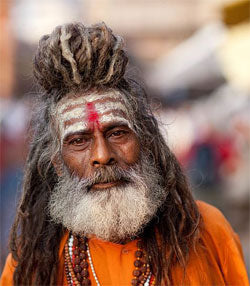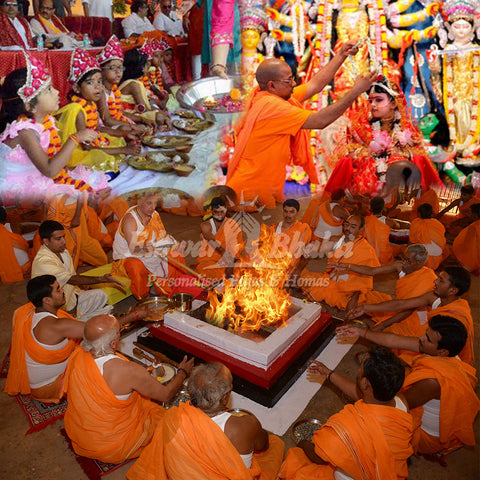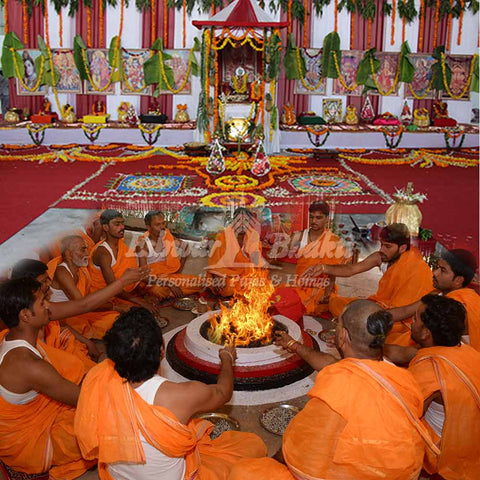Concept of Tilak
 In Hinduism, Tilak is a prestigious symbol worn by a person to show his or her faith. It also aids in releasing oneself from the physical realm. As per Atharvana Upanishad, any individual who applies tilak resembling the lotus feet of Lord Krishna becomes closer to the Paramatma or the Supreme Self. In Brahmaratra, it suggests that one should mark their body with vertical tilaks, which would assist them in attaining Sayujya liberation. Sanathana Dharm also focuses on the importance of applying Tilak or Tikka.
In Hinduism, Tilak is a prestigious symbol worn by a person to show his or her faith. It also aids in releasing oneself from the physical realm. As per Atharvana Upanishad, any individual who applies tilak resembling the lotus feet of Lord Krishna becomes closer to the Paramatma or the Supreme Self. In Brahmaratra, it suggests that one should mark their body with vertical tilaks, which would assist them in attaining Sayujya liberation. Sanathana Dharm also focuses on the importance of applying Tilak or Tikka.
Tilak is applied mainly on the forehead and also on the neck, hands, as well as on the chest. It is essential to apply tilak made from natural substances. Try to avoid artificial alternatives as they can have harmful effects on our skin and body. Sandalwood, turmeric, cow dung, clay, charcoal, vermillion, and ashes from Yajnas (commonly known as Vibudhi) are the substances used for making tilak. One can apply it with their hand or by using a metal strip. There are different benefits of applying tilak with fingers. For instance, its application with the ring finger can provide the person with peace, and the usage of the middle finger could increase his or her lifespan. Apart from that, the application of tilak has several other benefits as well.
Why is tilak applied on the forehead?: Most of us apply tilak between our eyebrows at the crown, which is the position of our Third Eye. The Third Eye point can transcend us beyond the material world to the inner consciousness of Brahman. As per the Tantras, the forehead is the place where three of our nadis meet. The application of a tilak on the forehead improves our thinking abilities and concentration. It can ease our minds, as well. Saddhus and pious people wear tilak as a religious mark. It also assists in the spiritual awakening of a person.
The benefits and significance of applying tilak: The application of tilak is a sign of auspiciousness, and it is a mark depicting the importance of a religious ritual. Usually, devotees of Lord Krishna wear tilaks. The tilak acts as a decoration to please the Lord as per the Vaishnava Sampradaya. In Shaiva tradition, the disciples wear tilaka made from the ashes of a fire (mostly yajnas). Adhi Yogis use the ash that they have collected from cremation grounds, and householders depend upon the ash obtained from burning cow dung, sesame seed, and rice brown. Its application can open up our receptivity and also allow us to focus on higher aspects of life.
There are other benefits of applying different kinds of tilaks.
Sandalwood - Application of sandalwood paste on the forehead provides a cooling effect. When it is dried, it gathers the attention of our Agnya Chakram. It also stimulates both the pituitary as well as the pineal gland. If you apply the paste while meditating or chanting, it can improve your concentration. Sandalwood tilak is a great stress reliever and can also heal headaches.
Vermilion - Its application enhances a person's inner beauty and also provides him or her with the energy to handle different situations. It is also beneficial in improving our focus and helps in awakening our psychic abilities.
Turmeric - Combined with its antibacterial properties, the usage of turmeric for making a tilak purifies our skin. It also aids in soothing our minds and improving our confidence.
Different types of tilak: There are different types of tilaks applied by various groups of people. It depends upon their religious affiliation and faith. The worshippers of Lord Krishna smear tilaks on their foreheads to portray their devotion. Vaishnwa Samprathaya, which emphasizes on the worshipping of Lord Krishna, is divided into Brahma Sampradaya, Kumara Sampradaya, Rudhra Sampradaya, and Sri Sampradaya.
Brahma Sampradaya - It includes Madhva Sampradaya and Gaudiya Sampradaya.
In Madva Sampradaya, you may draw two vertical lines depicting the lotus feet of Lord Krishna with Gopichandana obtained from Dwarka. Between these two vertical lines, you can make a black line with ashes of coal left after the Yajnas.
In Gaudiya Sampradaya, you may draw two vertical lines with the aid of mud collected from the Vrindavan. They resemble the lotus feet of Lord Krishna. You may join these two lines at the bridge of your nose in the shape of a Tulsi leaf as it is Lord Krishna's favorite.
Kumara Sampradaya - Here, Gopichandana is used for making the tilak. You may start applying from the bridge of your nose, and you can proceed with it as two vertical lines forming a U shaping in your forehead. You may place a black dot made from the slate collected from Barsana in the center. It is a representation of the presence of Krishna and Radha together.
Rudhra Sampradaya - Here, the tilak worn is a single vertical line. Kumkum gives the tilak its red color, and it is a depiction of Yamuna Devi. Govardhana is the form of Lord Krishna worshipped in the Rudhra Sampradaya.
Sri Sampradaya - Here, you may make two lines with the white mud collected from anthills. You can use the soil found at the base of a tulsi plant as well. They are both viewed as pure. In the middle, you may draw a red line made from the red stones in the anthills. It is a symbolic representation of Lakshmi Devi.
The application of tilak is deeply rooted in Hindu fate. In Shaivism, the use of the ash from Yajnas has a connection with the depiction of mortality. It also shows the uselessness of clinging onto materialistic aspects of life as they are temporal. The smearing of tilak on the Third Eye can awaken your Agnya Chakra and facilitate your union with the Absolute Self. A tilak can purify your religious as well as your spiritual journey.




